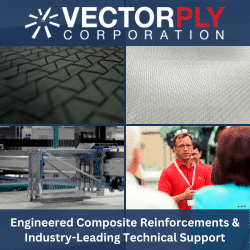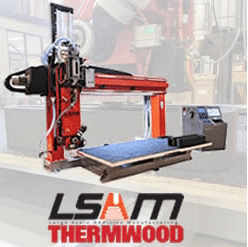
Gel Coat Basics
Unsaturated polyester resins (UPR) were first developed in the late 1920s in the research group of Dr. Wallace Carothers at DuPont. In the late 1940s, coatings made from these resins were applied to molds to protect them during the fabrication process of fiber-reinforced composites. By the early 1950s, several companies were offering pigmented gel coats for sale. Today, gel coats are a common surface finish, perhaps best known for their ability to improve product appearance, such as the surface of a boat hull. But gel coats are also used to improve weathering, filter out ultraviolet radiation, add flame resistance, provide a thermal barrier, improve chemical and abrasion resistance and provide a moisture barrier. Let’s take a closer look at gel coats. A Chemical Description Chemically, gel coat formulations comprise building blocks from five classes of raw materials: resins, pigments, additives, monomers and fillers. The resin impacts almost all application and in-service properties. Gel coats can be formulated from many types of resins, including UPR, vinyl ester, acrylics, epoxies and urethanes. Colorants and pigments impact color, water and UV-resistance, opacity and so on. Additive packages are used to affect flow and leveling properties, curing, UV-resistance and more. Monomers are used in gel coats as reactive solvents. During the curing process, the monomer reacts with the polymer in the base resin to form the thermoset backbone of the gel coat. Finally, fillers impact spray characteristics, fire retardancy, density and flow properties. Table 1 Types of Gel Coats and Related Products A comprehensive list of gel coat types and ancillary products is shown here.
A Functional Description Functionally, a gel coat is a high-quality finish designed to provide great aesthetics (color, gloss, opacity) as well as UV protection and water resistance to an FRP composite. The gel coat is generally applied to a smooth mold with a release agent. A special class of gel coats known as surface coats can be post-applied to existing parts. By changing the building blocks in a gel coat, a skilled formulator can develop products for a wide range of end-use applications. A comprehensive list of gel coat types and ancillary products is shown in Table 1. Performance Requirements It makes sense to take a look at the performance of the UPR/vinyl ester gel coat at two different stages – during the fabrication of the part and once the part is in service. During part fabrication, the gel coat needs to flow and cure properly. In high-volume shops, the cure speed of the gel coat can be the rate limiting step in the overall process. The flow characteristics of the gel coat will determine how well the product sprays, levels and resists sagging. Special primer gel coat formulations are formulated to maximize the adhesion and prevent cratering of post-applied paints. Once the part is in service, a properly selected gel coat provides durability by resisting ultraviolet light, water and other environmental stressors (temperature changes, abrasion, etc.). Gel coats do not have the exterior durability of automotive grade paints. A severely weathered gel coat is generally easy to restore to a high-gloss finish by buffing and polishing. Some common failure modes of gel coats are shown in Table 2. Diagnosing and troubleshooting these issues is beyond the scope of this article, and you should consult a gel coat technical service representative if you are experiencing any of these issues. Table 2 Gel Coat Failure Modes
Maximizing Success with Gel Coats Let’s wrap up with a checklist of things you can do to make your UPR/vinyl ester gel coat experience a positive one:
Standard Gel Coat Products | Specialty Gel Coats | Ancillary Products |
| Sanitary gel coats Transportation gel coats Marine grade gel coats Wind energy gel coats Tooling gel coats Clear gel coats (marine) Clear gel coats (marble) | Surface coats Sanding primer gel coats Vinyl ester barrier gel coats Fire retardant gel coats Conductive gel coats Tie coats for epoxies | Colorants Patching compounds Wax solutions UV absorber solutions Inhibitor solutions Promoter packages |
| Failure Mode | Types of issues |
| Rheology | sagging, poor tape line, curtains, thin film, orange peel/leveling, sedimentation, viscosity drift |
| Cure | wrong gel time, low peak, wrong film cure, gel time drift, low hardness, patch will not hold gloss |
| Color | wrong color, color change upon storage |
| Surface Defects | craters, fish eyes, color separation, porosity, resin tear, mottling, low gloss, specs/particles, streaks, blisters, fiber print, patch halo, patch color difference, blushing, pre-release, chalking |
| Contamination | soft gels, hard gels, liquid-liquid phase separation, undispersed powders |
| Density | high or low density |
| Opacity | poor coverage/hide |
| Dispersion | poor Hegman grind, undispersed pigments/fillers |
| Thermal Mechanical | fiber print, impact cracking, thermal cracking, cracking during de-mold |
- Clearly define your customer’s end-use performance requirements. Make a written list of everything you need the gel coat to do, including all application and in-service requirements.
- Work with your seller to select the right product for your fabrication process and end-use application.
- Follow the supplier’s gel coat usage guidelines on mixing, storage, peroxide choice, etc.
- Thoroughly test and validate the performance of your product. Ultimately, product performance depends on three things – material selection, part design and usage environment. The gel coat is one of many materials used to make a composite part. It’s up to you to make sure that the design works well in the intended environment.
- Order correct quantities to prevent old gel coat stock. Gel coat properties drift over time (viscosity drops; cure time lengthens).
- Recognize the gel coater job for what it is – a skill position. Applying gel coat uniformly, with good spray pattern, can be more challenging than hand layup. Choose employees for this position with an eye for detail, and structure the workflow so they can focus on applying the gel coat only.
- Maintain application equipment, and set up effective preventive maintenance.
- Manage shop environmental conditions.
- Provide continuous education. Utilize suppliers, trade publications and industry conferences to train your workforce on best practices and new materials.
- Fully leverage your gel coat service representative. A knowledgeable technical service representative can help you in many ways, including with plant audits, product troubleshooting, best practices, product recommendations and training sprayers.

SUBSCRIBE TO CM MAGAZINE
Composites Manufacturing Magazine is the official publication of the American Composites Manufacturers Association. Subscribe to get a free annual subscription to Composites Manufacturing Magazine and receive composites industry insights you can’t get anywhere else.



